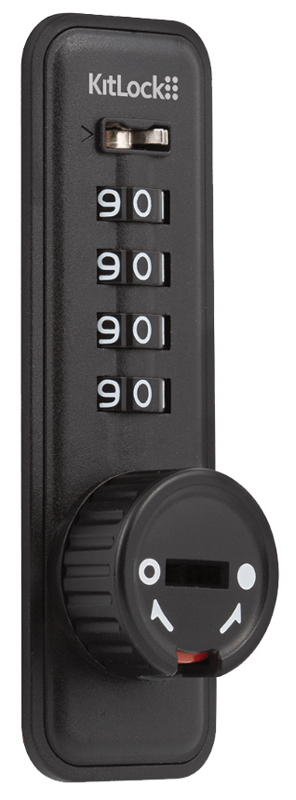 The KL15 KitLock from Codelocks is a keyless access solution for personal lockers and cabinets. The mechanical lock features an anti-vandal handle and is suitable for indoor and outdoor applications.
The KL15 KitLock from Codelocks is a keyless access solution for personal lockers and cabinets. The mechanical lock features an anti-vandal handle and is suitable for indoor and outdoor applications.
Designed for personal use and (ideally for storage lockers) the KL15 allows the user to set their own unique four-digit code and change this as often as they wish. The code is entered via four 0-9 wheels (allowing for up to 10,000 combinations) and the red and green indicators denotes whether the locker is locked or unlocked. The KL15 also features a code retrieval function, allowing the user to determine the combination with a code finder key, in case of a forgotten code.
The company has tested the unit in high and low temperatures, in dry and humid conditions, and has also been salt-spray tested.
The KL15 can be either surface or flush mounted. When surface mounted, the ergonomically designed trim plate also acts as an easy grip handle.
Installation
The KL15 is supplied ready to fit doors up to 22mm thick with the thickness of the door determining the back plate choice.
The lock can be fitted flush or surface mounted, either for a new installation or to replace an existing mechanical lock. For a surface fit, the Surface Mount Fixing Pack is required – the test unit supplied for this review came with the Flush Fixing Pack which determined the product test installation option.
To begin fitting a flush mounted unit, a hole measuring 20mm x 83mm needs to be cut out. The simplest way to do this is to mark out the area (checking that it will allow clearance for the cam to work) in the required orientation of the unit; the lock supplied was a KL15 vertical with right-hand or left-hand options also available. Then use the typical method for cutting a hole – drill out the four corners of the area, then use a hacksaw or jigsaw to cut from hole to hole, creating the rectangle.
The lock is then inserted and held in place using a backplate. Depending on the thickness of the door there are two backplates to choose from which are secured in place using the two supplied fixing screws. The cam can then be attached using the cam fixing screw – be sure to attach the cam in the correct orientation to match either locked or unlocked position on the unit. The lock is now fitted so the factory preset code of 0-0-0-0 can be changed.
Read the full review in the February 2021 edition of PSI magazine

